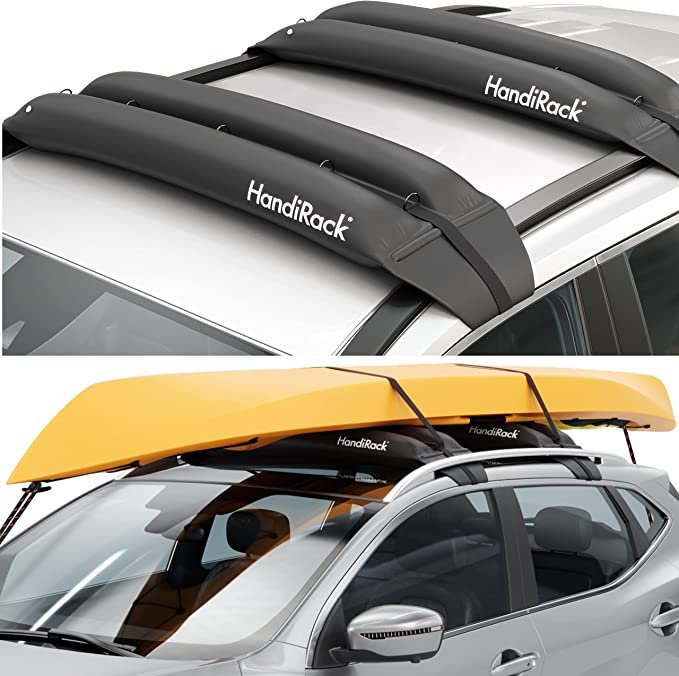Best Kayak Fishing Accessories
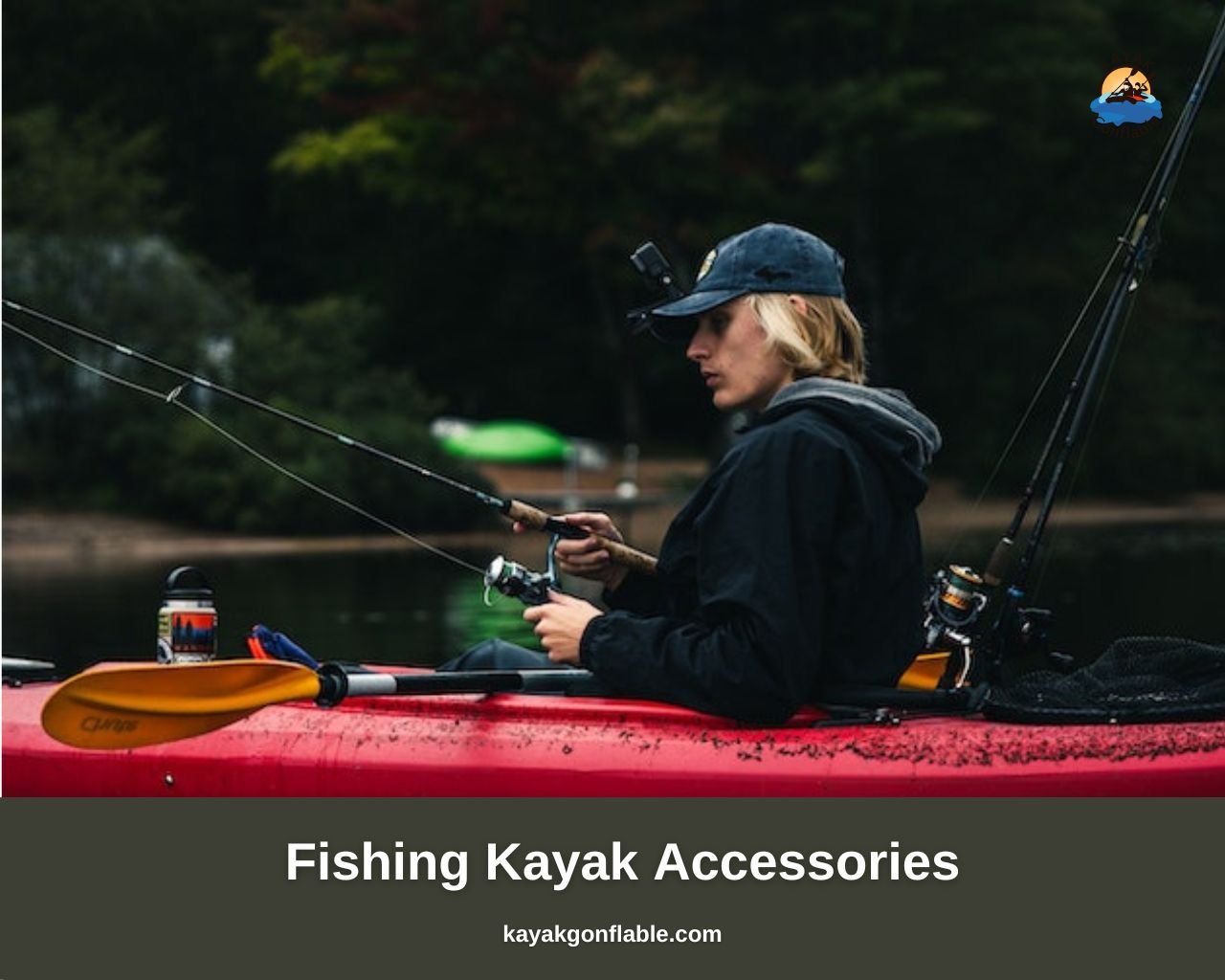
When you hear the word “kayaking,” the first thing that most likely comes to mind is the fun and relaxing sport in which you navigate a narrow watercraft through the water with a double-bladed paddle.
You should, however, know that kayaks can also be used for one of man’s oldest ways of obtaining food: fishing.
As time went by, kayaks designed specifically for fishing came into existence, and several accessories to make the fishing trip more enjoyable and productive were invented. In this article, we look into fishing kayak accessories.
What Are Fishing Kayaks?
If you’re new to the world of fishing and kayaking, you may be wondering what a fishing kayak is. Fishing kayaks are a type of kayak designed specifically for fishing.
They are equipped with features that make fishing easier and thus lack the speed of other types of kayaks. Fishing kayaks usually have one or more fishing rod holders, a storage area for bait and tackle, and a place to secure your catch.
Some fishing kayaks also have a livewell, which is a container of water that keeps your catch alive and fresh until you’re ready to clean it.
Fishing kayaks are usually wider and more stable than traditional kayaks, making them better suited for fishing in open water. They are typically paddled with a double-bladed paddle and are often used in tandem with a fishing rod and reel.
Fishing kayaks offer anglers a unique way to fish, as they allow for stealthy approaches to fishable waters and can be easily transported to remote fishing locations.
They also offer anglers a more intimate experience with the water and the fish they are pursuing. Fishing kayaks are relatively inexpensive, can be used in a variety of water conditions, and are quite easy to maintain.
Fishing kayaks are often used in waters that are too shallow or otherwise inaccessible for larger boats. They are available in a variety of sizes and styles to suit the needs of different anglers and can be outfitted with various accessories to make fishing easier and more comfortable.
Types Of Fishing Kayaks
Different types of fishing kayaks exist to suit the different fishing environments in which they are used as well as the different preferences of the fishermen.
The three main types of fishing kayaks are sit-in, sit-on-top, and inflatable kayaks. Each type has its own advantages and disadvantages that should be considered before making a purchase. The types of fishing kayaks are discussed below.
Sit-in Fishing Kayaks
A sit-in fishing kayak is a type of kayak that allows the angler to sit inside the kayak, rather than on top of it. This provides a more comfortable experience for the paddler, as well as more stability when casting and retrieving his line.
Sit-in fishing kayaks are easier to transport, as they can be loaded onto a car or SUV without the need for a trailer. Sit-in fishing kayaks are also easier to paddle and provide better protection from the elements.
Though not as common as sit-on-top fishing kayaks, they are ideal for those who want as little contact with the water as possible or those who want maximum protection from the elements while fishing.
By design, the paddler sits closer to the water in sit-in kayaks enabling him to paddle more efficiently and safely.
Pros
The advantages of using a sit-in fishing kayak include:
- Sit-in kayaks provide protection from the sun and the elements, making them ideal for fishing in any water condition.
- They have much more comfortable seating than their sit-on-top counterparts, especially if you are fishing for a long period of time.
- Sit-in fishing kayaks track well and are easy to maneuver.
- They are more efficient to paddle since the paddler sits closer to the water.
- They are very stable.
- Sit-in kayaks are ideal for fishing in cold weather as they protect you from the elements and help insulate you from the cold.
Cons
The disadvantages of sit-in fishing kayaks include:
- Sit-in fishing kayaks are more expensive than their sit-on-top counterparts.
- The kayaker does not have as much freedom to move his body as with a sit-on-top kayak.
- As the paddler sits closer to the water than in a sit-on-top kayak, his view of sight of fishing is also limited.
- They may not be the best fishing kayak to use in hot weather.
- Unlike sit-on-top kayaks, they don’t have scupper holes to get rid of any water that enters the cockpit so if don’t have drain holes, you may need a bilge pump to prevent swamping. The problem is compounded as the time you spend getting rid of the water cannot be spent fishing.
Sit-on-top Fishing Kayaks
If you enjoy fishing but don’t like being confined in a small, cramped space, then a sit-on-top fishing kayak is the perfect solution. It is no wonder that sit-on-top fishing kayaks are a popular choice for many anglers.
They are stable and easy to maneuver, and they provide a good platform for fishing. Sit-on-top kayaks are also comfortable to sit in for long periods of time, and they offer good storage options for gear and fish.
Plus, they’re easy to get in and out of, so you can spend more time fishing and less time fumbling around with your equipment.
Sit-on-top fishing kayaks are more popular than sit-in models because they are cheaper to make and easier for a beginner to use.
Pros
The advantages of sit-on-top fishing kayaks include:
- They are easier to get in and out of.
- Sit-on-top kayaks provide a better platform for reeling in big fish.
- They allow the angler more mobility. For instance, you can stand on the kayak to cast your line which could be a big advantage in certain situations.
- They are great for fishing in shallow water.
- Sit-on-top kayaks allow the angler easy access to the water and his gear.
- They are more stable than their sit-in counterparts.
- Sit-on-top kayaks have scupper holes making them self-bailing and eliminating the necessity of a bilge pump or the possibility of swamping.
- As the paddler sits on top of the kayak, his fishing view is broader increasing his probability of catching fish.
- They are cheaper than sit-in fishing kayaks.
Cons
Sit-on-top fishing kayaks are a popular choice for many anglers, but they have some disadvantages that should be considered before making a purchase.
They are not as stable as traditional kayaks, so they are not the best choice for beginners.
- They don’t provide as much protection from the elements as their sit-in counterparts, so they are not ideal for cold-weather fishing.
- Sit-on-top kayaks are typically heavier than sit-in kayaks making them more difficult to transport and store.
- They have less storage space compared to sit-in kayaks so you may not be able to bring all desired gear.
- Sit-on-top fishing kayaks have a lower paddling efficiency compared to sit-in kayaks making them more difficult to control and that could lead to accidents including capsizing.
- They have less comfortable seats which could make long fishing trips uncomfortable in the long run
Inflatable Fishing Kayaks
Inflatable fishing kayaks are a great option for anyone who wants to get into kayak fishing, but either doesn’t want to spend a lot of money on a traditional kayak or doesn’t have the space to store a traditional kayak.
They are also a good option for anglers who want to fish in remote areas, where it would be difficult to transport a traditional kayak.
Inflatable kayaks are easy to set up and take down and can be transported in a small car. They could be either sit-in or sit-on-top, so the choice is yours.
Pros
Inflatable fishing kayaks offer many advantages over their traditional hard-shell counterparts.
- They are much lighter and easier to transport, making them a great option for anglers who have to hike to their fishing spot. They offer more flexibility in terms of fishing locations
- They are also more stable and comfortable, giving you a better experience on the water.
- Inflatable kayaks are the most affordable of the three types.
- Should you get caught in a storm, you can simply deflate your kayak and pack it up, rather than struggling to paddle back to shore.
Cons
Inflatable fishing kayaks offer a unique angling experience, but they also have some disadvantages that should be considered before purchasing one.
- They are less durable than traditional kayaks, so they are more susceptible to punctures and wear and tear.
- They are not as rigid as traditional kayaks, so you need to pay attention to where you launch and land.
- Inflatable fishing kayaks also can be less stable in choppy water conditions and can be more difficult to paddle in windy conditions.
- They may not paddle as well or as fast as hard-shell kayaks.
- While some high-quality models may allow the angler to stand up in them, others may not be that stable.
Accessories For Fishing Kayaks
If you are a professional or recreational angler who is into kayaking, the first equipment you need to make your dreams a reality is a fishing kayak.
Once you have the kayak, the next thing you need are accessories that will make your fishing adventure safe, enjoyable, and productive. Accessories for fishing kayaks are discussed below.
Rod Holders
If you’re someone who loves to fish, you know that having the proper accessories can make a big difference. Rod holders are one of those accessories.
When you’re fishing from a kayak, having a good rod holder can be the difference between landing a fish and losing it, especially when you are fighting a big fish struggling to escape.
Having rod holders keep your hands free to paddle and navigate the kayak, and they also allow you to fish multiple lines at once. There are many different styles of rod holders available, so it’s important to choose the one that best suits your needs.
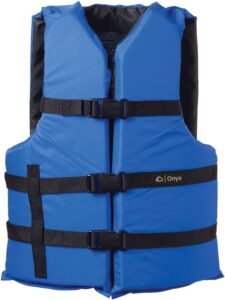
Kayak Fishing PFD
As the popularity of fishing from kayaks continues to grow, so does the market for kayak fishing accessories. One of the most important, and often overlooked, accessories is a personal flotation device (PFD).
PFDs are an essential piece of safety gear for any kayak angler, and there are a variety of different types to choose from depending on your needs. Kayak fishing PFDs provide extra warmth in cold weather and help keep you dry in wet weather.
They also provide extra flotation in case of capsizing. PFDs are safety gear that anglers must wear at all times if they are to ensure their safety on the water.

Kayak Anchor System
A kayak fishing anchor system is a device that helps keep a fishing kayak stationary in the water, eliminating the need to paddle and allowing you to focus on catching fish without the paddling disturbing the water and chasing the fish away, keeping you from drifting away from your fishing spot.
There are many different types and brands of kayak fishing anchor systems, but they all serve the same purpose.
A good kayak fishing anchor system will be made of durable materials, be easy to use, and keep your kayak secure in a variety of conditions. Some kayak anchor systems even come with a fishing rod holder so you can keep your rod in one place while you’re fishing.
Make sure whatever anchor system you use is reliable to ensure your safety and help set the perfect environment for catching fish.
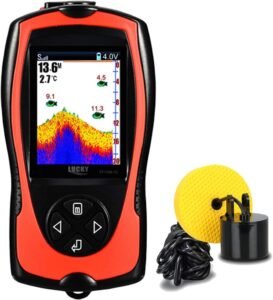
Fish Finders
Kayaks are becoming more popular for fishing, and many people are looking for ways to make their kayak fishing trips more successful. One way to do this is to invest in a fish finder.
Fish finders can help you locate fish in the water, so you can spend more time fishing and less time searching for fish. That way, you have a greater probability of catching the fish. They can also help you determine the depth of the water, so you can know how deep to fish.
How Do Fish Finders Work?
A fish finder is a device used to locate fish underwater. By using sonar, the device emits sound waves and then records the echoes that bounce back.
Fish finders can be used in both fresh and salt water, and are a common accessory for fishing kayaks. Fish finders are helpful for anglers of all levels of experience, from beginners to experts.
They can be used to find schools of fish, as well as individual fish. The size of the fish is not always known, but the depth at which they are located can be measured. Some fish finders include a depth finder, which will tell you how deep you are in the water.
Power Supply For Fish Finder
If you enjoy fishing from a kayak, then you know how important it is to have the right accessories. One accessory that is often overlooked is a power supply for a fish finder.
A fish finder can be a great asset when fishing as fish finders use sonar to detect fish in the water thus eliminating the time you take looking for fish and helping you to maximize your resources when kayak fishing.
Without a power supply, however, fish finders will not work. There are a few different options available when it comes to powering your fish finder.
You can choose to use a battery, solar panel, or generator. The option you choose will depend on your resources and how comfortable you are carrying the power source in your kayak.
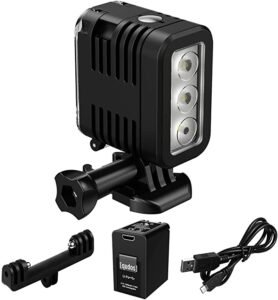
Kayak Lights
Fishing kayaks are a great way to get out on the water and enjoy a day of fishing. However, if you want to fish at night or in low-light conditions, you need to have a good set of kayak lights. Kayak lights can be used as a safety measure, to help you see where you are going, and to attract fish.
What To Consider Before Choosing A Kayak Light
When looking for the best kayak lights, there are several factors you need to consider. These include:
- Brightness – A good set of kayak lights should be bright enough to light up your surroundings. They should also be bright enough to see the obstacles around you early enough to avoid them as you paddle through the water. If your kayak light is not bright enough, you will not be able to see where you are going and could have an accident.
- Purpose – The purpose of the light is a very important factor. Are you looking for something to help you navigate in low-light conditions? Or are you looking for a light to help you signal for help in an emergency? Once you’ve determined the purpose of the light, you can narrow down your options. If you want the light for navigation, you will want lights that are bright enough to illuminate your surroundings no matter how dark it gets so you can see where you are going and avoid mishaps. The navigation light will also help you notice other vessels in the water and avoid collisions. If the light is for signaling, however, you will want one that can produce a powerful beam capable of being seen even in very low visibility conditions so help can find you when you need it.
- Water Resistance – Some lights are meant to be used while you’re on land, while others are designed for use at sea. You’ll want to make sure you get one that is waterproof and designed for use on the water to prevent it from short-circuiting and going off while in use when it gets wet.
- Sturdiness – Look for a light that is made from durable plastic. This will help protect the interior of your kayak and make it last longer. There is no point in purchasing a kayak light if it will not stand the test of time.
- Long Run Time – A light with a longer run time will allow you to stay on the water for longer periods. This is especially true when fishing at night as catching fish requires patience and you don’t want to lose your catch because your light was too dim or it gave out on you.
- Mounting Options – You’ll want to make sure that your light has different mounting options depending on what type of kayak you have. It is preferable to get a set of kayak lights that are mounted in several places to provide ultimate illumination.
Livewell
As the popularity of fishing kayaks continues to grow, so does the demand for accessories that make kayaks more functional for fishing. One such accessory is the livewell.
While fishing from a kayak has always been a popular choice for anglers looking to get away from the crowded shorelines, the recent trend of outfitting kayaks with livewells has taken the sport to a whole new level.
For those unfamiliar with the term, a Livewell is simply a tank of live bait that is kept on board the kayak, allowing anglers to stay out on the water for longer periods of time.
The livewell may not contain bait but it can serve as a place for anglers to store their catch, keeping it fresh and alive till they get to shore and can focus on doing whatever they want with it.
Livewells are usually mounted on the front or back of the kayak, and they can be either battery-operated or manually operated. While not essential, a livewell can be a valuable addition for those who enjoy fishing from their kayak.
Things To Consider If You’re Thinking About Adding A Livewell To Your Fishing Kayak
If you love to fish, but don’t love the idea of lugging around a heavy cooler full of bait and fish, you may be considering adding a livewell to your fishing kayak. Here are a few things to consider before making the investment.
- First, you have to determine if your kayak is stable enough to accommodate a livewell. Take it seriously as an unstable kayak is prone to swamping and capsizing both of which could lead to the angler sustaining serious injuries.
- Next, you’ll need to decide what size livewell you need. The average kayak can accommodate a livewell that is approximately 7 gallons. This will typically accommodate a few large fish and enough extra bait for another trip out. If you plan to fish for bigger species like catfish or bass, you’ll need a much larger livewell. The size of the livewell ultimately depends on the size of your kayak, how much space you are willing to sacrifice to integrate the livewell into the kayak, and how many fish you intend to keep alive till you get to shore.
- Then, you’ll need to choose a location for the Livewell that won’t affect your kayaking performance. Many kayaks are designed with the Livewell in the center of the cockpit and out of sight. Some kayakers prefer to position the Livewell on top of their kayak, which allows them to keep an eye on their catch without dismounting from their kayak.
- You will need to make sure the livewell is properly sealed and rigged for drainage. This is to prevent the water in the livewell from spilling into the kayak and to be able to change the water in the livewell easily to aid in cleaning the livewell. The drainage system could be a pump or drain hole fitted to the livewell.
- Your budget gets the final say on whether you get a livewell, and if you can afford one, which type should you get. Naturally, several types of livewells exist on the market each with its price range so it is up to you to choose the one you can afford. Be sure you make proper and extensive research into livewells so you can get one from a trusted brand that will stand the test of time.
Paddle Leashes
A kayak can be a great way to get out on the water and fish, but sometimes it’s hard to keep track of all your gear. That’s where a paddle leash comes in handy.
A paddle leash is a simple device that attaches your paddle to your kayak, so you don’t have to worry about losing it if you tip over.
Paddle leashes are relatively inexpensive and easy to use, making them a great accessory for fishing kayaks as you can concentrate on catching your prey instead of constantly keeping an eye on your paddle’s whereabouts for fear of being stranded on the water.
Paddles are, however, not the only piece of equipment on a fishing kayak that should be leashed. Always leash your fishing rods or other gear that is just lying around on the kayak to prevent it from being knocked overboard and lost.

Kayak Cart/Trolley
A kayak cart is a great accessory for fishing kayaks. Kayak carts are easy to use and provide a stable platform to mount your kayak making transportation of your kayak and all your fishing much easier.
With a kayak cart, you can easily move your kayak and gear from one fishing spot to another all at once. Kayak carts are also great for storing your kayak when not in use.
Knife, Pliers, and Snips
Kayaks are a great way to get out on the water and enjoy fishing, but did you know that some great accessories can make kayak fishing even better?
Knife, pliers, and snips are all great additions to any fishing kayak and can help you land more fish and have more fun by ensuring you are efficient on the water.
A knife will help you cut line and gut fish. Pliers will come in handy for removing hooks. And snips will help you trim lines. With these three things, you’ll be able to handle anything that comes up while you are kayak fishing.
And ordinary though they may seem, forgetting to carry these accessories when going fishing could result in a very frustrating fishing experience for you.
Sun Protection
Fishing is a popular activity that many people enjoy. However, it is important to be aware of the dangers of the sun while participating in this activity and take adequate precautions.
When most people think of sun protection, they don’t usually think of fishing kayaks. However, fishing kayaks are one of the best places to enjoy the sun while staying protected from its harmful rays.
Wearing sunscreen and protective clothing is essential, but another way to protect yourself from the sun’s harmful rays is to use a fishing kayak with a built-in sunshade.
The sunshade could range from a simple design to full-on enclosures. The important thing is to be shielded from the sun’s harmful rays.
Flags
In recent years, kayak fishing has become increasingly popular. Many kayak fishermen use flags to help increase their visibility on the water.
While some kayakers feel that flags are a necessary safety precaution, others view them as simply a way to make their kayak more visible and stylish. No matter what your opinion on flags is, there is no denying that they can be a great accessory for your fishing kayak.
While flags are a necessary safety device for all kayakers, they can also be a great way to show off your personality and style. There are flags available in a variety of colors and designs, so you can find one that fits your taste.
You can even find flags with fishing-themed designs, which can be a great way to show off your passion for the sport. There are many fishing kayak accessories available to anglers in order to make their time on the water more enjoyable and productive.
Some of these accessories include rod holders, fish finders, and GPS units. While not all of these accessories are necessary, they can certainly help to make your fishing trips more successful.
So, whether you’re a beginner or a seasoned pro, be sure to consider what fishing kayak accessories might be right for you before heading out on your next fishing adventure.





